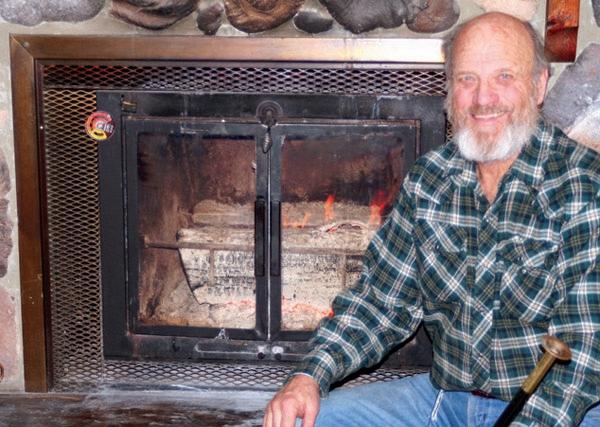








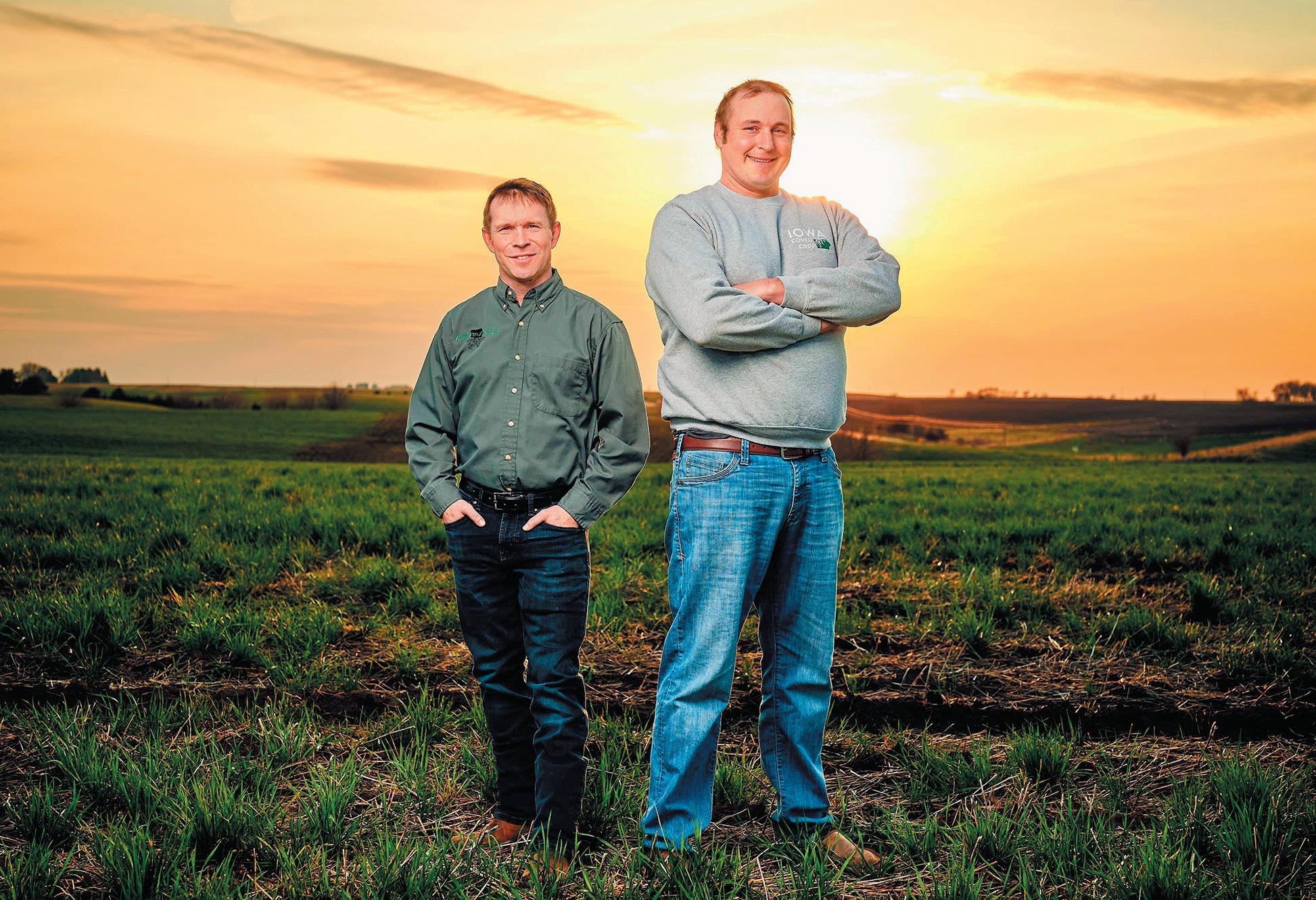
As the business celebrates its 10th anniversary this year, it’s a time for reflection for the ICC team, including co-owners Frederick, 37, and his wife, Melissa, 33, and James Holz, 38, and his wife, Megan, 37. CONSERVATION
Some of these growers
JEFFERSON — If you stop by Iowa Cover Crop’s (ICC) headquarters for one of their conservation coffees during the winter, the conversations might range from millet to mung beans. “We get farmers from Madrid, Guthrie Center and around the area who want to get together to




“One client is trying six or seven different cover crop species on one farm,” Frederick said. “We also work with farmers who are new to cover crops. We want beginners to have a good experience.”
trying “cocktails” of cover crop seed mixes. Others want to talk about trying wide-row corn and interseeding cover crops. Some clients follow conventional production practices, while others are organic farmers.
Not only do customers count on ICC for cover crop seed, but ICC can help with cover crop seeding, too. Customers appreciate personal touches like this that distinguish ICC, which is owned and operated by farmers.































Combined, the ICC team has more than 20 years of experience growing cover crops.
They have personally seeded rye grain, rye grass, oats, spring and winter wheat, peas, hairy vetch, common vetch, rapeseed, forage kale, crimson clover, radish, and turnips on their own family farms. Through this diverse, first-hand experience, ICC provides personalized, farmer-to-farmer advice.
“We’re Iowa farmers just like our customers,” said Bill Frederick, a Greene County native. “We want to offer conservation with convenience.”
In February 2024, Iowa Secretary of Agriculture Mike Naig presented the Leader in Conservation Award to Iowa Cover Crop during the annual Agribusiness Association of Iowa Showcase and Conference in Altoona.
“Iowa has set records for conservation adoption each of the last two years,” Naig said.
“That takes individuals, partners, businesses, farmers and landowners working together to make that happen. I want to commend ICC for being leaders in water quality and conservation. As we further accelerate our water quality and conservation progress, it will take continued cooperation by public and private partners in both urban and rural areas working together to make even more advancements toward our Nutrient Reduction Strategy goals.”
Before they were business partners, Bill Frederick and James Holz were 4-H buddies and classmates growing up in Greene County near Jefferson. They both graduated from Jefferson-Scranton High School in 2004 and eventually came back together as their ag careers evolved.
It wasn’t easy to get started in farming, Bill Frederick recalled.

“It was tough to find land, and it took a long time to find my niche,” he said. Frederick and his wife discovered, however, that their approach to farming was appealing to a certain type of landowner.
“We were sought out by a landowner who was specifically looking for a young farmer who was a no-tiller and uses cover crops,” Bill Frederick said.
As Frederick and Holz gained experience growing cover crops, they founded ICC in 2014 as a way to help a few neighbors and diversify their own family farm operations.
“We started by offering seed with service,” Frederick said. “What began as a side hustle grew into the main hustle.”
The team started their business at a facility north of Paton. The business grew slowly with basic equipment,

including a 1950s-style Clipper seed cleaner.
Then came Dec. 15, 2021.
A tornado/derecho early that evening marked an unprecedented, historic event for Iowa, according to the National Weather Service, since this was the first derecho in December anywhere in the United States.
It also defined a turning point for ICC. After the violent winds ripped apart the young company’s facility, the storm forced the owners to make some big decisions.
“Do we think this business has the potential to rebound and go to the next





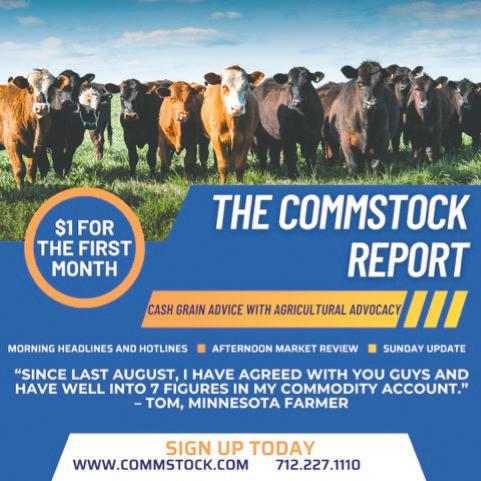

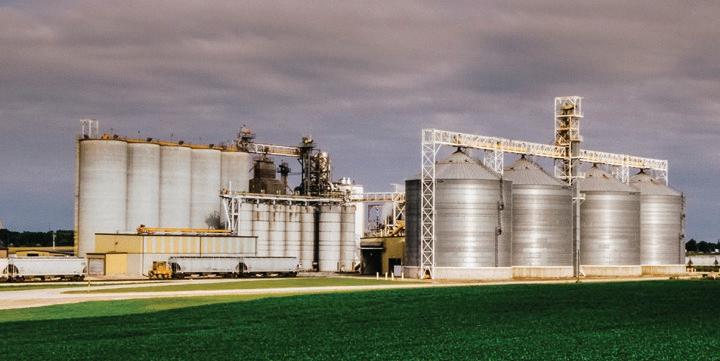








ICC warehouse manager Trevor Ross, a fellow 2004 Jefferson-Scranton High School classmate, had worked at Iowa Corn Processors near Glidden and had experience with logistics, warehouse management and more. Megan Holz brought a financial background to the business, thanks to her expertise in accounting and banking. Melissa Frederick’s biology/quality assurance background also proved valuable to help ICC grow.
The Iowa Cover Crop team offers value-added services beyond selling cover crop seed and lawn seed.
“If you’re a landlord and want to structure your agreements with farmers to include conservation practices like cover crops, we can connect you with area landowners who have done this,” Bill Frederick said. “It’s about thinking beyond just corn and soybeans.”
The ICC team estimates that about 10% of the farmers in their trade territory use cover crops. Younger farmers are fairly receptive to seeding cover crops, and so are a number of older farmers.
“The toughest sell is the 35- to 55-year-olds,” Bill Frederick said. He speculates that this might be due to a comfort level with doing things a certain way and not being willing to change, and/or concerns regarding financial issues associated with cover crops. “We know there’s not much margin for error in production ag.”
That’s why the ICC team helps connect farmers with cost-share opportunities that can offset the cost of seeding cover crops. A variety of agencies and organizations, including Practical Farmers of Iowa, USDA’s Natural Resources Conservation Service (NRCS), and the Iowa Department of Agriculture and Land Stewardship (IDALS), can help. “Depending on your situation, cover crops can be a profit center for you,” Bill Frederick said.
ICC also works with contract growers.
“We haven’t had a problem with seed availability,” Bill Frederick said.
In addition, ICC has a growing dealer network and offers seed and application services throughout Iowa and the Midwest.
“Many of our dealers are also seed corn dealers,” Bill Frederick said. “It’s not uncommon for them to make more profit by selling cover crop seed than seed corn.”
When the Frederick family and the Holz family aren’t selling cover crops, they can be found raising row crops, cattle, small grains and kids on their respective family farms in Greene County. “We’re grateful that the cover crop business keeps growing every year,” Bill Frederick said.
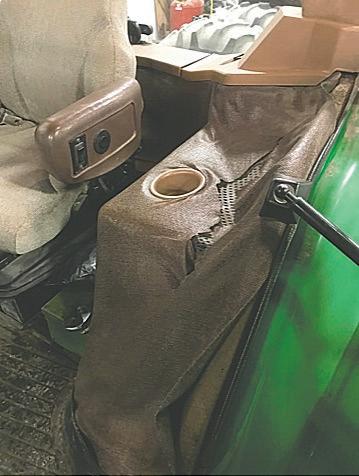




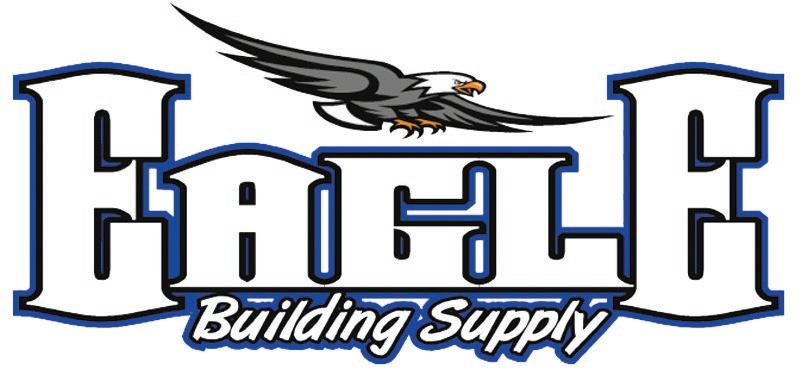
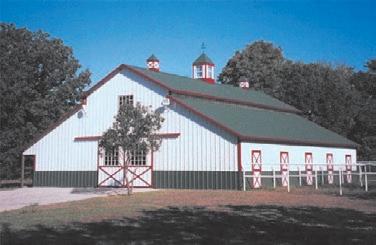













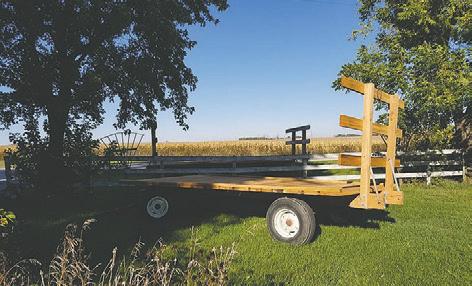
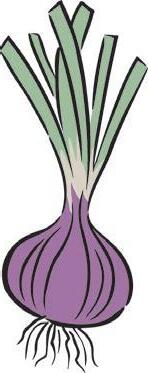


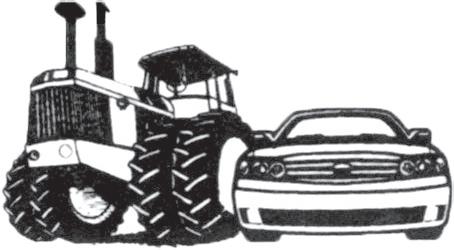





























The grain markets headed south in early March, but prices still remain around production costs, which is typical for this time of year, according to Chad Hart, Iowa State University Extension agriculture economist.
“This is normal for our ag markets. When we’re looking on the acreage side, soybeans are making a little money from the 2023 crop.
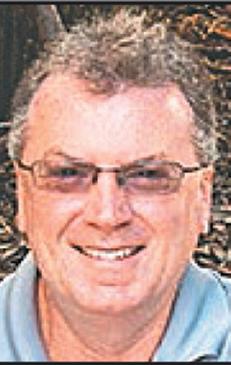 Chad Hart
Chad Hart
Corn is losing a little money,” Hart said. “Normally, when you see that, you plant more of what’s making money the following spring, so we can expect more soybean acres this spring and less corn acres.”
The USDA’s estimates have soybeans increasing 3.9 million acres to 87.5 million acres and corn down 3.6 million to 91 million acres planted. Trendline yields paired with those estimated planted acres could end up netting 17 billion bushels of corn and around 4 billion bushels of soybeans.
“Those are still big crops. In fact, soybeans could be the biggest crop we’ve had,” Hart said.
However, ag economists can’t ignore the potential for production problems, particularly the drought that’s worrisome across the Midwest.
“The drought’s been here four years but farmers still produced really good crops those past four years. So it’s a question of if we can do that again this coming year,” Hart said.
On the demand side, the picture looks positive, but it’s not enough to eat up the surplus crops farmers have been producing.
“That’s why we’ve been watching prices decline, because demand can’t catch up to production,” Hart said. “We’re seeing demand for both corn and beans growing as we move forward in 2024, but the problem is that demand isn’t growing as fast as the ability to produce the crop.”
As South America continues to ramp up its infrastructure so that it can

move its crops more quickly onto the global market, producers there also are boosting their production numbers despite dealing with drought issues. So they remain a strong competitor.
“We are bringing on more customers for corn exports, so we’re seeing some recovery there in both big and small markets. We’re selling to Mexico, Canda, Japan and Columbia, but also smaller markets,” Hart said. “Soybeans is where we’re struggling. Exports are up in the small markets, but realistically, it’s all about China when it comes to soybeans and exports. We’re so dependent on them and they’re a mammoth buyer.”
In the long run, Hart expects a return to normal for ag prices.
“Prior to 2023, we had a lot of profitability. Usually, when producers see profits, they reinvest back into agriculture and that in turn increases production costs and tends to lower prices, because as we reinvest, we grow more crops and as we do that, that brings prices down into the range of production costs,” Hart said.






















been happy with how the markets have dropped.
“But that’s something we always expect after a super cycle where we see quite high profits and good prices. There’s always a period where profit is harder to achieve. Most farmers are probably not going to cut back, but we always plant and look for a good crop. We’re an optimistic bunch,” said Buss, who’s currently serving as the Iowa Corn Promotion Board chair.
To help offset lower prices, Buss has already taken advantage of different ways to lower input costs, especially since they’re down from 2023 levels.
“I locked in my fertilizer last summer for the 2024 crop and it’s turned out to be considerably cheaper than where it is today,” Buss said. “I do have some old corn crop and beans left, but I’m banking on a seasonal rally. I generally always get one between the first of March and first of July. There’s usually a weather scare that comes along.”

































Every year, new ag equipment options roll out and technological advances continue to grow.
Brian Steward, a professor of agricultural and biosystems engineering at Iowa State University, said leaders at the Off-Highway Vehicle Chassis Dynamometer Laboratory at ISU are testing agricultural vehicles with the goal of improving their power train performance and efficiency.
The state-of-the-art dynamometer enables controlled, dynamic testing of complete off-highway vehicles. The facility is designed to test vehicles up to 450 kW (600 Hp) per corner at speeds of up to 80 km/h (50 mph) and offers independent monitoring and loading of the traction system at each vehicle corner.
“The chassis dynamometer will be one of the few facilities capable of testing large construction and farm machinery,” Steward said.
Case IH launched a first-of-its-kind large square baler automation at the end of January. Designed for handsfree efficiency, large square baler automation maximizes throughput and delivers consistent, high-quality bales. The dealer-installed automation kit connects with Class 3 ISOBUS Puma, Optum and Magnum tractors.
“Productivity is the name of the game when it comes to the tight operating windows hay producers face,” said Brian Spencer, hay and forage marketing manager at Case IH. “Baler automation is the perfect example of purposeful technology from Case IH. It aims to tackle efficiencies by taking the duty off the operator to steer and make adjustments in field, allowing them to add productivity while in the cab.”
At the 2024 Commodity Classic in Houston, Texas, in March, New Holland unveiled new model additions to its Genesis T8 series with PLM Intelligence. It offers a surge in horsepower and refined engine control. In fact, operators can expect a 5- to 15-rated horsepower boost.


“Our customers continue to seek more power and performance from their tractors without having to change the body or framework. In a sense, get stronger without getting bigger,” said Ken Paul, product marketing manager, high horsepower tractors for New Holland. “The result is a new lineup of our GENESIS T8 Series. These new models are designed to deliver greater engine power and elevate fuel economy without compromising the look and feel customers and operators appreciate from current T8 models.” New Holland also rolled out its T9 SmartTrax with PLM Intelligence for model year 2025. The track system will push through virtually any type of field conditions. “The T9 SmartTrax with PLM Intelligence reflects our legacy for pushing boundaries,” Paul said. “It’s more than an enhanced track system. It’s a commitment to farmers built on the basis of innovation, efficiency, capability and versatility.”



-Submitted photos
ABOVE: The 5670 pivot fold, splitrow planter, available in 12/23-row and 16/31-row configurations, plants both 15-inch and 30-inch row widths, and can be used as a dedicated narrow-row planter or a multi-crop planting workhorse. Pictured is the 30-inch row width planter.
LEFT: Available for agricultural use on five, model year 2025 T9 models — T9.520, T9.580, T9.615, T9.655 and T9.700 — that range from 475 to 645 rated horsepower, the SmartTrax system ensures performance on a variety of terrains while enhancing overall operational performance and preserving the integrity of the field environment.
Iowa-based Kinze Manufacturing will launch a new planter for the 2025 season and will be available for ordering from Kinze dealers starting in early April 2024. The new 5670 pivot fold, split-row model planters deliver enhanced productivity, increased operator convenience and efficient serviceability, according to



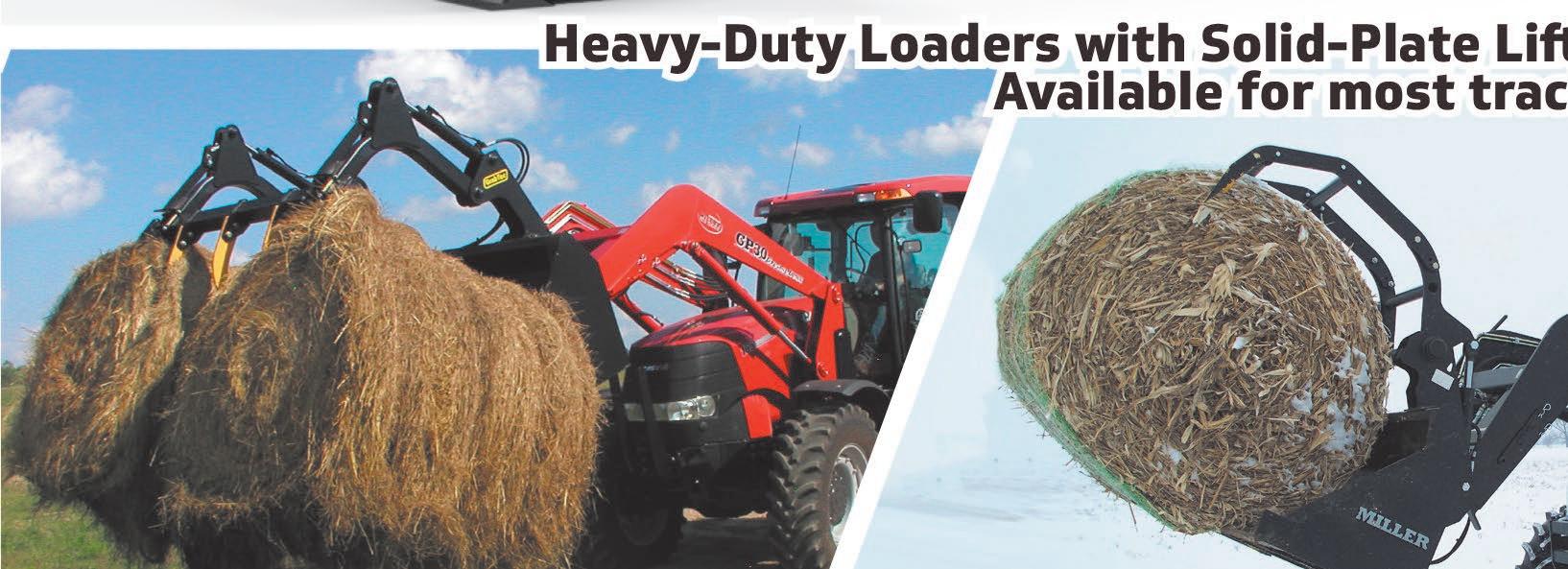





Several new corn and soybean varieties just might find their way into fields for the 2024 growing season.
Merschman Seeds, an independent, family-owned seed company from West Point, has partnered with Corteva to roll out PowerCore Enlist corn.
“We know that traits do not bring additional yield to the table, but they do protect the yield potential. As important as that yield is to our farmers, we know yield is where we have to start,” said Ben Pieper, Merschman Seeds product manager and agronomist.
“Brand new genetic offerings in the PowerCore trait prove to be outyielding current germplasm that are in competitor trait packages. The yield is protected from three different modes of action above ground that provide additional protection against armyworms, European and Southwestern corn borer and cutworms.
“The new trait also gives you the most herbicide options in the industry by being tolerant to Enlist One, Fop chemistry, Roundup and Liberty.”
The latest soybean seed treatment for higher yields from Merschman Seeds is called Starting Line Plus. It offers maximum protection against early-season pests and disease.
“This add-on combines the powers of Saltro and Trunemco, providing highly-effective protection against sudden death syndrome and soybean cyst nematode (SCN), all added to our standard Starting Line Seed Treatment,” Pieper said. “Trunemco adds microbial protection from SCN and supports root health and uniform plant growth.”
Other companies offering new options to producers include:
n AgriGold with 13 new Enlist E3 varieties and 11 new XtendFlex varieties for soybeans.
AgriGold will launch 16 new corn hybrids with relative maturities ranging from 84 to 120 days, as well as five new trait offerings on proven hybrids for the 2024 growing season.

n LG Seeds will add 28 new corn hybrids ranging from 80- to 118-day relative maturities in 2024. The new corn hybrids feature seven different trait offerings — conventional, Roundup Ready, Agrisure 3110, VT Double PRO, Agrisure Duracade 5222, SmartStax and SmartStax PRO. LG Seeds will also have 26 soybean varieties in 2024, giving farmers 70-plus varieties to choose from that have maturities ranging from Group 00 to Group 5.
n NK Seeds has introduced its largest new corn class in more than a decade for the 2024 growing season, including 20 new hybrids with traits for above- and below-ground protection. NK Seeds’ latest soybean class includes 28 new varieties with trait choice and disease resistance. Pioneer announced its newest soybean seed technology — the Z-Series, which will be available in limited volumes for the 2024 planting season, with larger commercial volumes available in 2025.
“This Z-Series class of soybeans builds on 50 years of soybean breeding at Pioneer,” said Liz Knutson, Pioneer U.S. soybean marketing lead in a news release. “During this 50-year

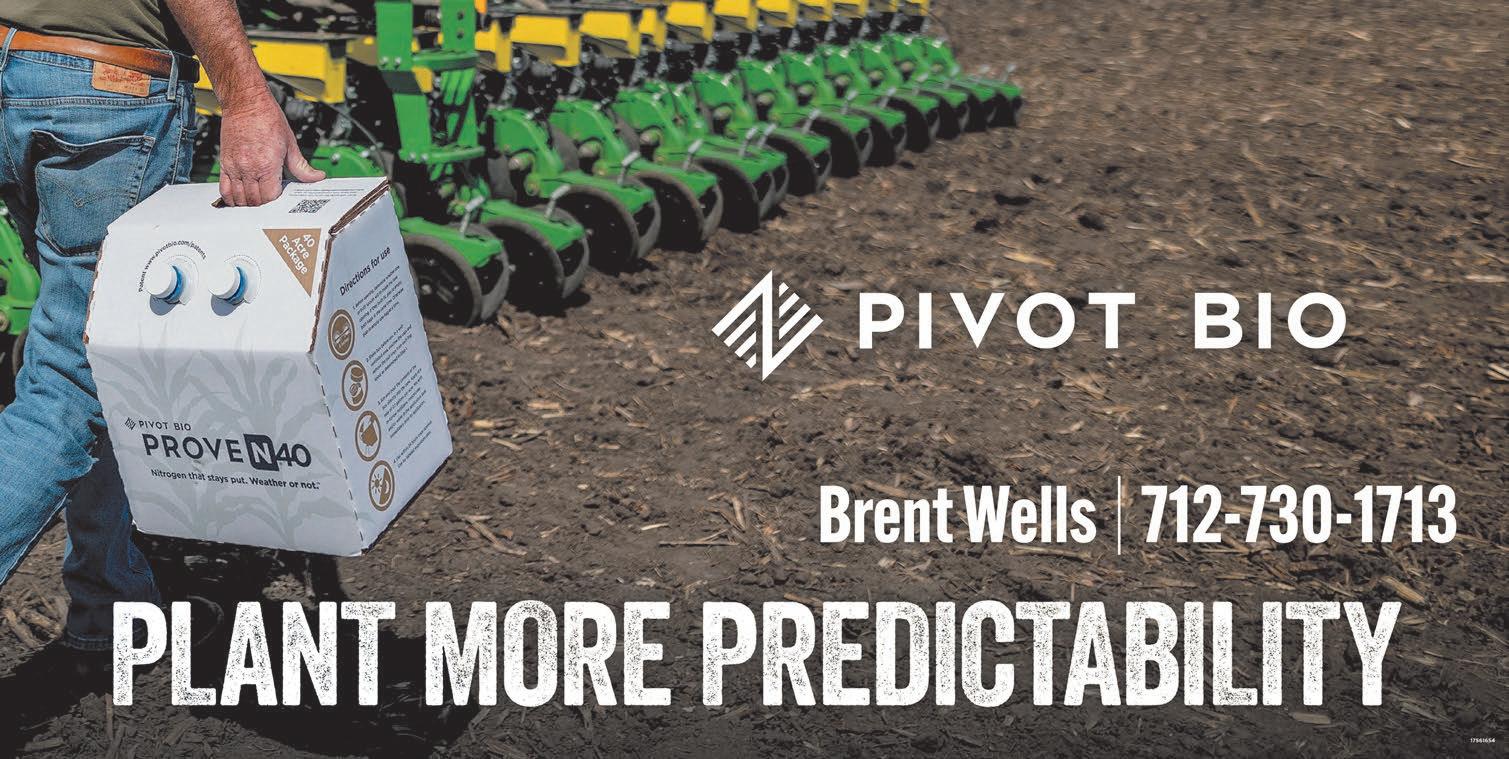


history, we have introduced five soybean ‘series’ — B, M, Y, T and A — that each signaled trait technology innovations and transitions and set a new standard for Pioneer soybean performance.”
Pioneer offers more than 60 new corn hybrids for 2024. This year’s class expands the availability of Pioneer brand Vorceed Enlist corn and introduces PowerCore Enlist and PowerCore Ultra Enlist corn.
BASF offers its Xitavo soybean seed with 11 new varieties available for 2024. With these additions, the Xitavo seed portfolio now includes 44 varieties, all featuring triple-stacked Enlist E3 technology for weed control flexibility. Xitavo soybean seed is owned by MS Technologies and exclusively distributed by BASF.
BASF also unveiled Liberty ULTRA with GLU-L Technology for 2024, a new post-emergence knock-down tool for weed control in glufosinate-tolerant canola, corn, cotton and soybean. This first traitenabled resolved isomeric product controls grasses and tough broadleaf weeds like waterhemp, Palmer amaranth, giant ragweed and kochia.

ABOVE:












KIRON — Brian Lundell, 37, remembers a time when sitting down for any length of time was painful.
“I’ve been suffering with back pain for the last couple years,” said Lundell. “It just hurt to ride in a car and sit in meetings.”
Like many people with back pain, Lundell thought he could alleviate his pain by going to the chiropractor.
“On the farm, it’s not unusual to do something that might throw a person’s back out,” said Lundell. “For simplicity, over the past couple of years that was my mentality.” However, Lundell’s health issues went beyond what a chiropractor could do for a long-term fix.
The next step was to seek an MRI to see what was going on in Lundell’s lower back.
“Before I could get an MRI to be covered by insurance, I had to try physical therapy and a number of other smaller steps,” said Lundell. “I know if we went to the extreme immediately, our insurance would be 10 times higher than it is already, but all those extra steps meant prolonging my path to feeling better.
“I went through physical therapy and tried muscle relaxers and pain meds, but none of that worked,” he said. “We then reapplied to the insurance company, and the MRI was approved.”
Just prior to harvest 2023, magnetic imaging revealed that Lundell suffered a ruptured disc and the ones above and below it were going bad; therefore, the muscles strained to keep the vertebrae intact and straight.
“I did some due diligence and talked to a few other people in similar situations,” said Lundell. “I wanted to know what they went through, and where they went for a solution, and the type of experience they had.”
The MRI also showed a shifted vertebrae suggesting that an event caused the damage.
While Lundell doesn’t remember any one accident, he does acknowledge that he’s been an active farmer since

is huge.”



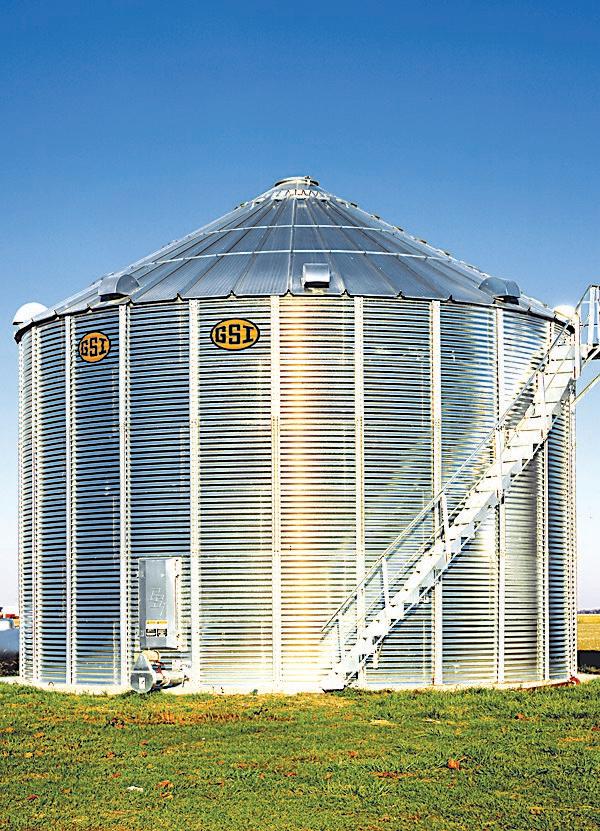









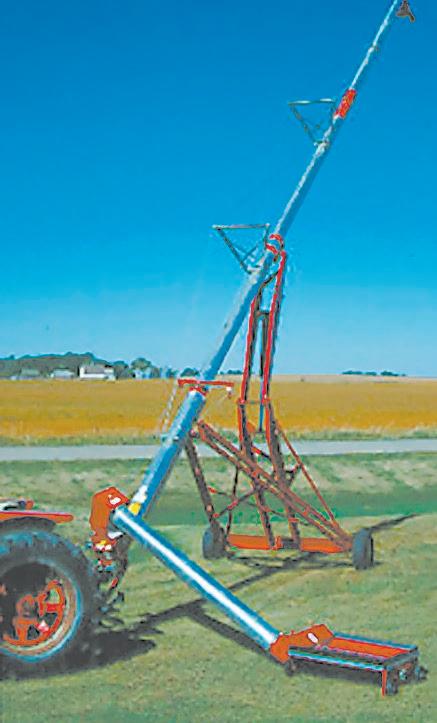




the day he could help on his parents’ farm. “I’m the type of person who might get knocked down, but I brush myself off and get back to it,” said Lundell. “I would carry 100-pound tractor weights in each hand. Can you imagine the amount of compaction on my lower spine?”
Lundell cites not just one event but said many years of working his body to the max brought him to this point.
After meeting with an Omaha surgeon, Lundell felt he was on the track to recovery.
“In my case, I had two discs — one on top of the other; one was very bad and the other needed repair as well. If we hadn’t had the second disc repaired, I would have been back in surgery dealing with it.
Lundell’s surgery was Feb. 22, taking almost six hours to perform. The surgeon inserted donated bone marrow into the center of the disc and then screwed the vertebrae together. The spine takes about six months for the bones to grow together.
For the weeks following the surgery, Lundell is to take it easy, which is not his demeanor.
“I have to give [my wife] Lisa credit,” said Lundell. “On the labor side, it’s psychologically tough to consider chores getting done without my involvement. Lisa helps me with doing anything and everything to recover as quickly as possible, but she also helps me deal with the mental aspect of not being able to be involved. My parents have also been very helpful; my mom has done a lot of chauffeuring me around.”
Lundell also credits his older brother Brad, another AMVC hog producer, as a great help as well.
“The hog work is the main thing right now,” said Lundell. “I couldn’t have gotten the needed work done without Brad. The best thing, of course, is that it wasn’t even a question that needed to be asked. He just wanted to know what needed to be done, and that helps a lot. To be in this position, and not have that

stress load on me, is huge.”
Even though Lundell is only in his second month of recovery, he notes immediate improvements. “Right away the sciatic pain was gone,” said Lundell. “While I have recovery pain, the back pain — the pain that drove me to surgery — is gone. “The surgeon told me that the discs above are in good shape, but if I don’t change my lifestyle, I could have more issues down the road. I love raising hogs and doing daily chores, but I will be looking at a hired person to do some of the loading and sorting. It’s just what I need to do to age well for my family and myself.”
“Our 5670 model planters are new from hitch pin to closing wheels.”
SUSANNE VEATCH
President, Kinze Manufacturing
“John Deere precision upgrades are available for planters, sprayers and combines.”
KYLE BARRY
John Deere go-to-market manager for precision upgrades
autonomy-ready high-horsepower 9RX series tractors, such as an industry-leading 830 horsepower model; C-Series air carts that provide new options for improved seedingtime productivity, quality and accuracy; factory install of the AI-enabled See & Spray premium weed sensing technology on Hagie STS sprayers; and S7 Series combines that feature new fuel-efficient engines, cutting edge automation features and updated residue-handling, grainhandling and loss-sensing systems.


If you have a fireplace that burns wood, you know that it loses all of its heat up the chimney. Rick Titus has a wood burning insert that will burn with the efficiency of a wood stove and fit inside your fireplace so it keeps your fireplace look.
If you have a gas log in your fireplace it also sends all of its heat up the chimney. Rick has Vent Free gas logs that can burn as efficient as a gas cook stove and burn with the damper closed, thus keeping all the heat in the house.
“The Precision Ag Essentials kit includes the G5Plus display, Starfire receiver and JDLink modem. This upgrade kit will provide farmers the opportunity to upgrade their technology to help increase productivity. The hardware kit has two different licenses customers can choose from — the Essentials license or the Advanced license. The Essentials license includes AutoTrac, Section Control and RowSense for $2,000. The Advanced license with SF-RTK includes AutoTrac Implement Guidance, AutoTrac Turn Automation, AutoPath, InField Data Sharing and Machine Sync. This kit and license provide an affordable way for farmers to begin or to take the next step in their technology journey,” said Kyle Barry, John Deere go-tomarket manager for precision upgrades. The See & Spray Premium precision upgrade kit offers technology that provides farmers more than 50% herbicide savings and is available as a precision upgrade for MY18 or newer John Deere sprayers with ExactApply, BoomTrac 2 Pro and 120-foot boom.


“See & Spray Premium sees, targets and kills in-season weeds using advanced cameras and machine learning that distinguishes crops from weeds and selectively target sprays only the weeds. This technology helps farmers be even better stewards of the land and approach the growing season in a new way,” Barry said. “In addition, John Deere precision upgrades are available for planters, sprayers and combines.”








